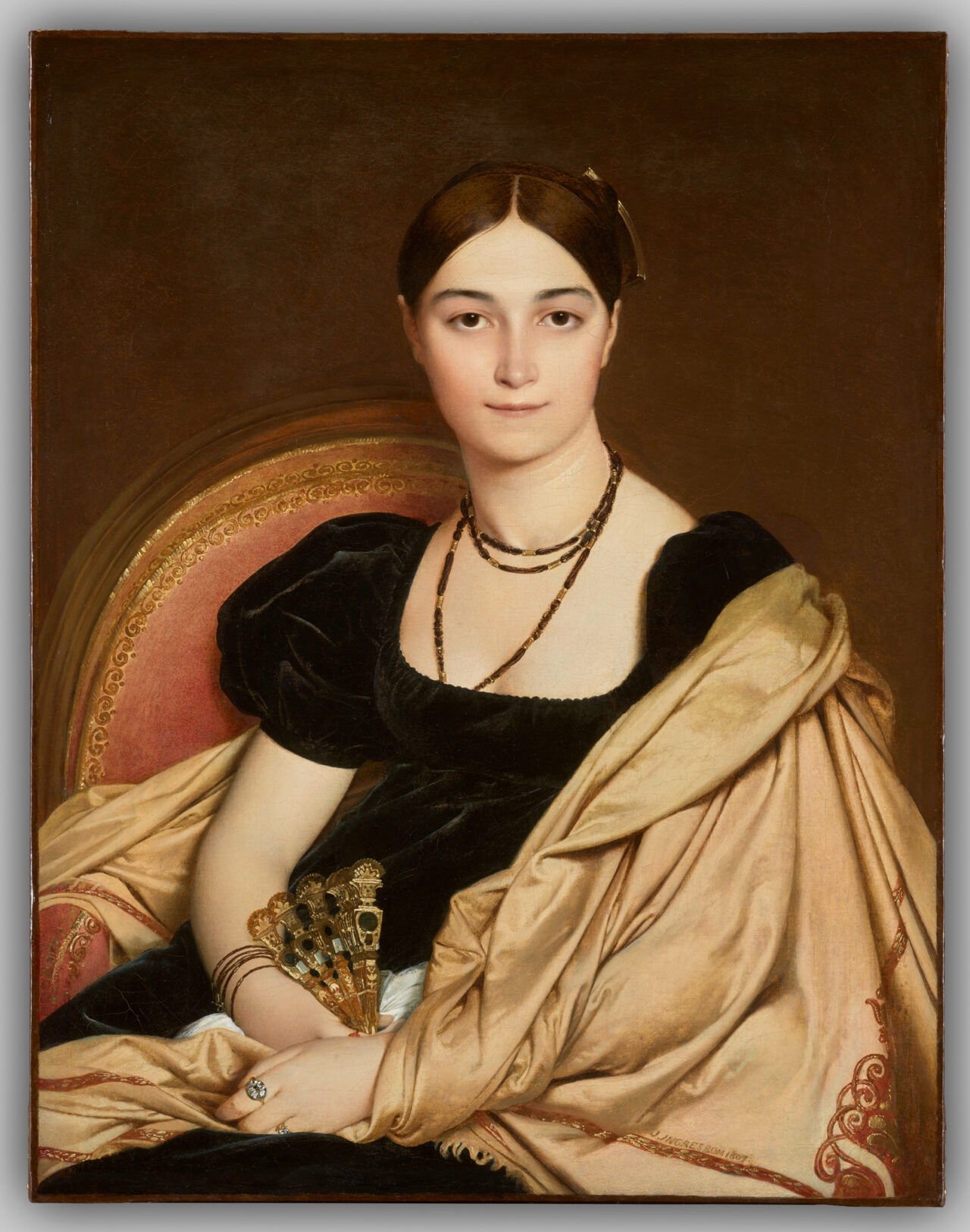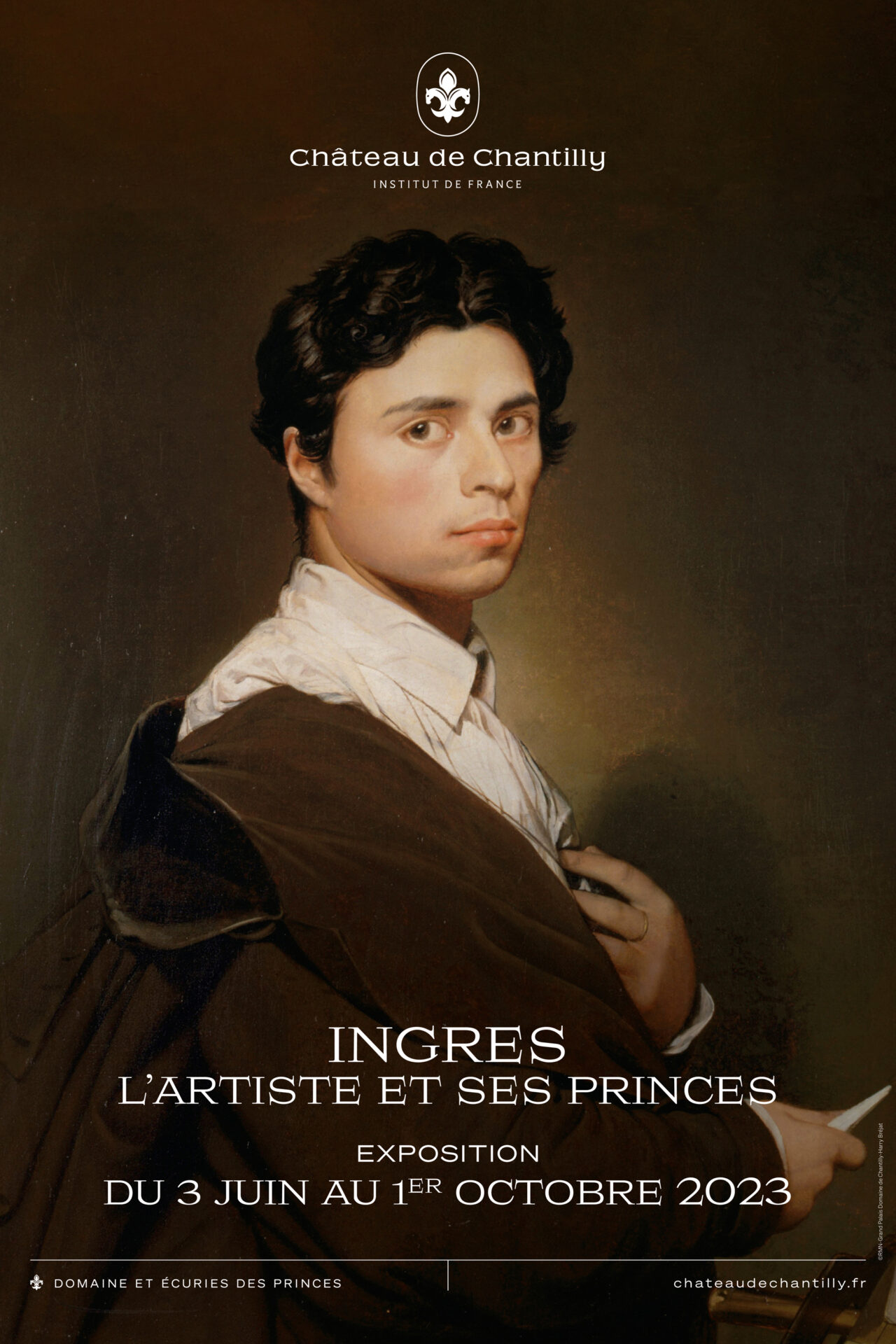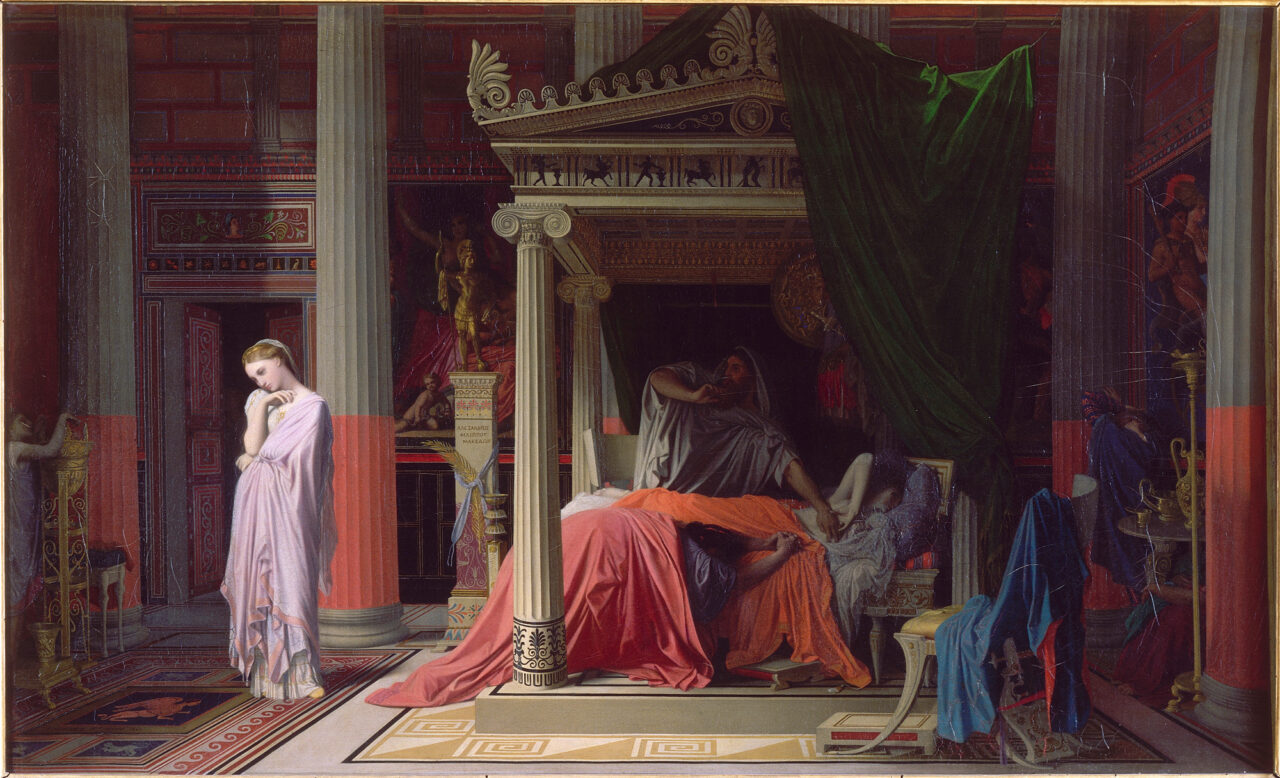A successful artist of the first half of the 19th century, Jean-Auguste-Dominique Ingres (1780-1867) is an unclassifiable and often visionary painter. Behind his apparent classicism there shines an originality and a search for perfection that are still fascinating. Now an exhibition in Chantilly, Ingres: The Artist and His Princes aims to shed light on the roots of his success.
With the advent of the July Monarchy (1830-1848), Ingres found tremendous support in the Orléans family, which contributed to the creation of some of his greatest masterpieces. These close ties are the core of the exhibition at Chantilly.
Gathered from national and international collections, paintings and drawings commissioned or collected by the Princes of Orléans will be brought together at Chantilly, along with their studies and variants. They will shed light on one of the greatest French painters’ perfectionist and methodical work. New analyses focusing on some of the artist’s most important masterpieces, as well as previously unpublished or rediscovered works, will highlight the unique personality of one of the great figures in the history of art.

Patrons
This story begins with the privileged relationship between Ingres and the heir to the throne. One of his greatest patrons was the Duke Ferdinand d’Orléans, Prince Royal (1810-1842), King Louis-Philippe’s eldest son, who acquired in 1839 his consignment sent from Rome, Oedipus and the Sphinx (Paris, Musée du Louvre, 1808). He commissioned him to paint the famous Stratonice (Chantilly, musée Condé, 1835-1840), and also asked him to paint his Portrait (Paris, Musée du Louvre, 1842). These three masterpieces linked to one of the greatest lovers of Ingres’ art will be exhibited together for the first time.
After their son, the Prince Royal’s, accidental death on July 13, 1842, at the age of thirty-two, King Louis-Philippe and Queen Marie-Amélie decided to entrust Ingres with the creation of the stained-glass windows for the Saint-Ferdinand chapel, which was built less than a year after the tragedy on the very spot where the duke died, near the Porte Maillot in Paris. The stained glass windows depict the royal family’s patron saints: St. Philip, St. Louis, St. Amelia, St. Ferdinand, etc., Ingres gave these characters the Orléans family members’ faces.
The bereaved royal couple repeated the experience the following year at the royal chapel in Dreux (1844), the tomb of the Orléans family, as well as in Carheil (Loire Atlantique) at the Prince of Joinville’s home, and in 1842 commissioned a large religious painting for the Château de Bizy’s chapel.
The Duke of Montpensier, the Royal Prince’s younger brother, soon became close to Ingres, commissioning a work from him in 1847 (Brussels, Musée Royal des Beaux-Arts). It is presented in a unique way by the exhibition.

Ingres’ Glory
In October 1847, Henri d’Orléans, Duke of Aumale (1822-1897), also commissioned Ingres to paint stained glass windows for the Château de Chantilly’s chapel. It had been bequeathed to him by his great-uncle, the last Prince of Condé, and he intended to restore it after the revolutionary destruction.
Ingres and the Duke of Orléans’ so special relationship was also partly the reason for the Duc d’Aumale’s acquisitions, who donated Chantilly to the Institut de France and was one of the 19th century greatest French collectors. It was in memory of his elder brother, who had suddenly passed away, that the Duc d’Aumale acquired five major paintings and a large drawing by the artist. These are now kept at the musée Condé in Chantilly.
This exhibition will shed new light on these masterpieces, thanks to the unprecedented reunion of the preparatory drawings and variants associated with them, which will show us round back into the master’s studio. The exhibition also recalls that after Ingres’s death, the Duc d’Aumale wanted to acquire Homer Deified (Paris, Musée du Louvre, 1865), a major work by Ingres and, in a way, his artistic testament, a project that was abandoned due to political events.

Striving for Perfection
Ingres was sensitive to criticism and a perfectionist, an eternally dissatisfied artist who sought the ideal beauty, constantly revisiting his compositions, modifying them and enriching them, sometimes after several decades. Recent scientific analyses (X-rays, ultraviolet, infrared, etc.) conducted at the Centre de Recherches et de Restauration des Musées de France (C2RMF) in the Louvre Palace, visually show how Ingres reworked and modified his greatest masterpieces. The Self-Portrait is one of them, painted when he was twenty-four possibly (Chantilly, musée Condé), begun in 1804 and completed around 1850; or the great Venus Anadyomene (Chantilly, musée Condé), undertaken in 1808 in Rome and completed in 1848. In this respect, Antiochus and Stratonice (Chantilly, musée Condé), commissioned by the Duc d’Orléans, is a case in point: while
Ingres was inspired by his master David (Paris, École nationale supérieure des Beaux Arts, 1774), he then sought the ideal composition, producing up to three drawings and five paintings on this theme. Each work was thoroughly researched: Ingres was an admirable draftsman who multiplied studies of the whole and of details, and the exhibition brings together sketches and preparatory studies around each major work.
Panorama
The exhibition is chronological, presenting more than 110 works that retrace, through commissions and princely collections, a panorama of Ingres’ career, from his beginnings in Paris to his last years, including his two stays in Italy. The exceptional assistance of the Musée Ingres Bourdelle in Montauban has been key in bringing together nearly forty works by the master, thereby enabling us to study the genesis of the main works on display. The Frick Collection in New York is lending the famous Portrait of Mme d’Haussonville, a major Orléanist figure, which is leaving the New York museum as a special one-off.

Major French and foreign museums will also participate in the project through numerous loans: Among others, in France, the Musée du Louvre, the Musée d’Orsay, the Château de Versailles, the Musée des Arts Décoratifs, the Bibliothèque Nationale de France, the École Nationale Supérieure des Beaux-Arts de Paris, the Institut de France, the Musée Fabre in Montpellier. Also in the United States the Metropolitan Museum of New York and the Hyde Collection (Glens Falls), and in the United Kingdom the Barber Institute of Birmingham. In Switzerland, the Kunstmuseum of Bern and the Napoleon Museum of Thurgau in Arenenberg; in Belgium the Royal Museum of Fine Arts; in the Netherlands the Boijmans van Beuningen Museum in Rotterdam and the Museum of Amsterdam, etc. , besides numerous private collections.
The scientific catalogue that will accompany the exhibition will bring together the best specialists on the subject, leading to new advances in our knowledge of the artist. It will be an opportunity to discover little-known major works, some of which were never before exhibited in France.
INGRES: THE ARTIST AND HIS PRINCES
Chantilly, musée Condé, Jeu de Paume room
from June 3rd to October 1st, 2023
See also: Horror in Surrey: Ewbank’s Cinema Poster Collection












